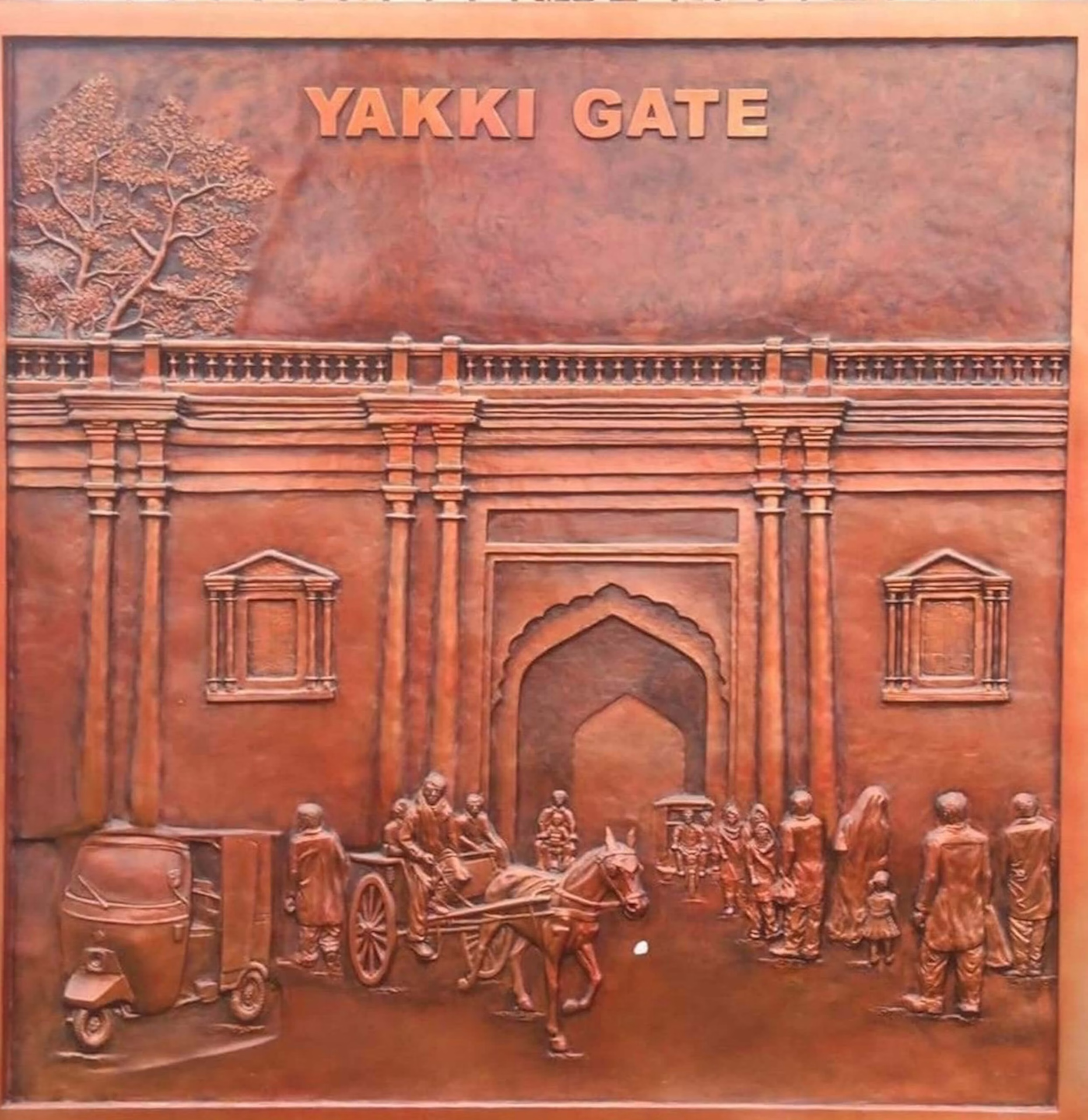The city of Lahore stands as a testament to the rich and grandeur of the Mughal era, proudly preserving the cultural legacy of this majestic dynasty. As one of the most influential centers of Mughal rule, Lahore is home to architectural marvels and artistic treasures that have endured the passage of time.
The gates of Lahore are a remarkable testament to the city’s rich historical and cultural heritage. Each gate showcases the artistic and engineering brilliance of its era, with distinct designs that reflect the architectural trends of their time.
Although only 6 of the 13 gates exist today, historically, they played a crucial role in maintaining order and security within the city. They functioned as administrative checkpoints for regulating trade, collecting taxes, and verifying the credentials of travelers.
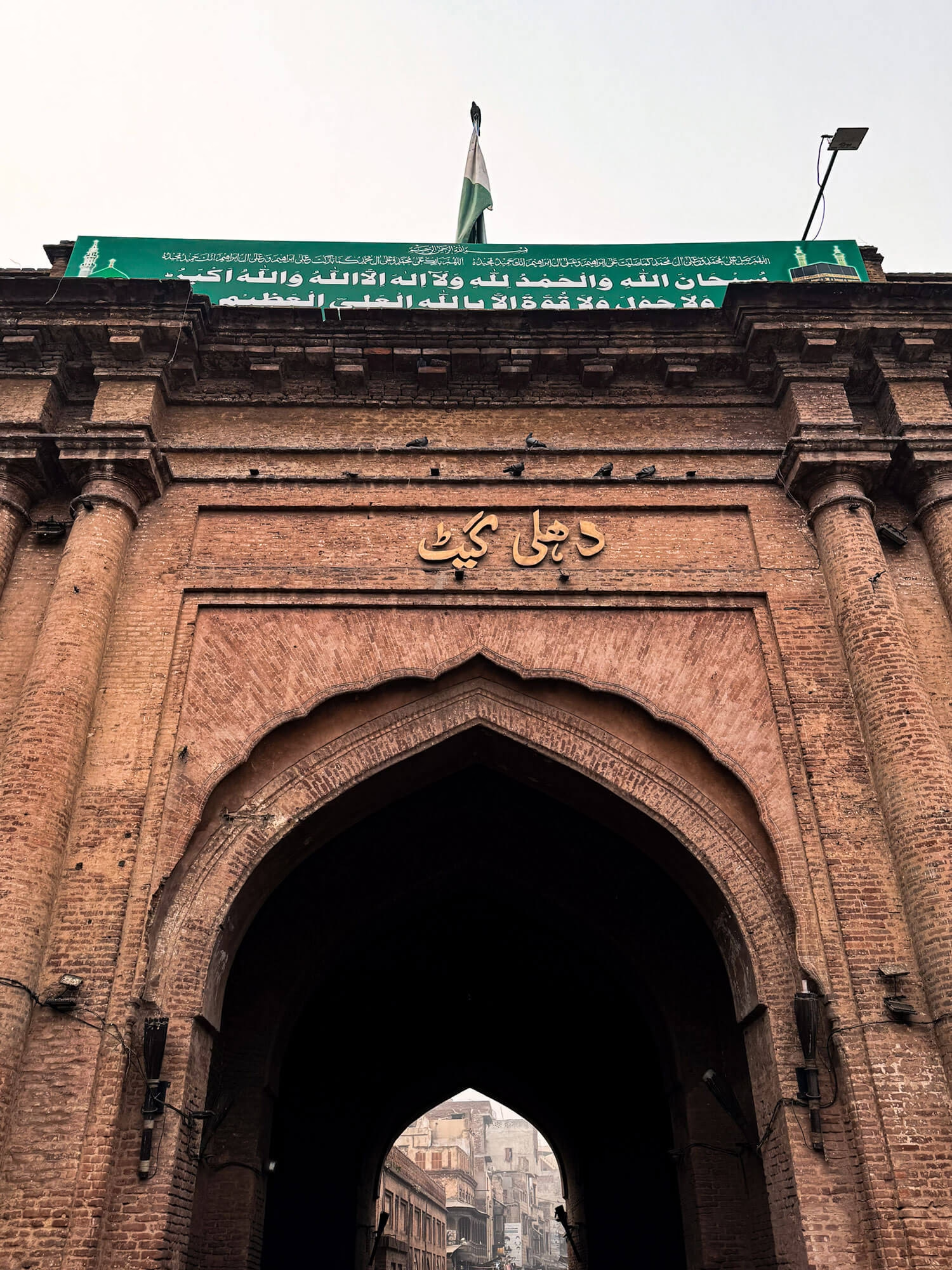
The Akbari Gate is named after the Mughal emperor Muhammad Jalal-ud-Din Akbar, the third Mughal emperor, who rebuilt Lahore’s citadel and surrounding town. Close to the Akbari Gate, Akbar also established a market, which was named after him as Akbari Mandi. Akbari Mandi remains one of Lahore’s major commercial centres for grains, nuts, and spices.
The Akbari Gate was once considered the most beautiful of Lahore’s thirteen historic gates; however, it no longer exists. Its original site, however, can still be traced by visiting Akbari Mandi. Though lost to time, the gate remains etched in the city’s memory as a great historical landmark of Lahore and a symbol of Mughal urban design and commercial vitality.
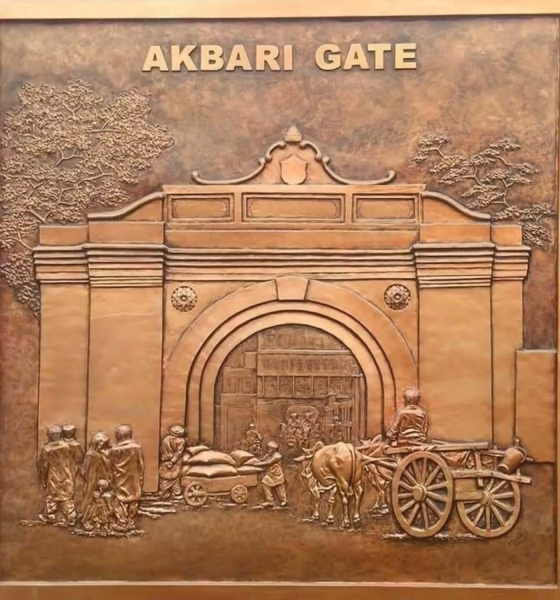
The Bhaati Gate is one of Lahore’s oldest and most storied landmarks, a witness to centuries of history and the lives of countless influential figures. As one of the two oldest entrances to the Walled City, it once guarded the key north-south route during the Ghaznavid era.
The origin of the gate’s name has been obscured by time, but it is widely believed that when Emperor Akbar expanded the city eastward and divided it into nine districts, or guzars, Bhati Gate and its bazaar marked the boundary between Guzar Mubarak Khan to the east and Guzar Talwarra to the west. The gate likely derives its name from the Bhatti clan, who inhabited these quarters during that era.
However, others believe that it is named after the ancient Bhat Rajput tribe.
The most popular market here is Hakiman Wala Bazaar, named after the numerous Hakim (traditional physicians) shops located there. Moreover, near Bhatti Gate is the Faqir Khana Museum, which houses a remarkable collection of artefacts from various eras of history. Also within Bhatti Gate is the old residence of the renowned poet and philosopher Allama Muhammad Iqbal (R.A.), where he lived during his graduation years. Another notable landmark is the Victoria Girls High School, named in honour of Queen Victoria, which has stood here since the colonial period.

Delhi Gate is one of Lahore’s most iconic landmarks and served as a vital entry point to the Walled City, opening onto the historic high road to Delhi. This is where the gate got its name from.
The Delhi Gate served as a major entry point for travellers and traders alike, and unsurprisingly, the city’s largest caravanserai was located just outside the gate, alongside Chowk Dara Shikoh, named after the Mughal prince, his palaces, and the renowned Nakhas Mandi (horse market).
Even today, the sprawling Delhi Gate Bazaar echoes the commercial vibrancy of Mughal-era Lahore.
Inside the gate lies a cluster of significant Mughal-era structures, including the Shahi Hammam, Chitta Darwaza, Wazir Khan Mosque, and several historic havelis. The original Mughal-period gate built during Emperor Akbar’s reign was demolished by the British Government and reconstructed in a completely Western style.
Behind the façade stands the elliptical domed “deorrhi” flanked by rooms on both the ground and first floors. During the colonial era, these were the officers of the magistrate and municipal councillor. The first British-era Kotwali (police station) of Lahore was also established inside the Delhi Gate.
Delhi Gate suffered considerable damage during the communal riots of 1947, at the time of partition. However, it has since been carefully restored to reflect its original shape and glory.
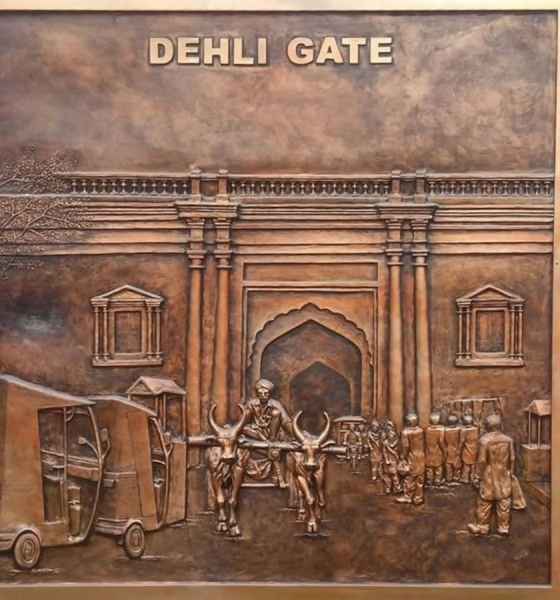
The Kashmiri Gate was named as such because it faces the direction of Kashmir. During the Mughal era, caravans departing for Kashmir would leave through this gate.
The present structure was built by the British in the late 19th century in a colonial style, and closely resembles the Sheranwala Gate, which they also rebuilt.
After independence, however, commerce within Kashmiri Gate grew rapidly, and the locality evolved into one of the busiest commercial centres of the Walled City. Architecturally, the gate is T-shaped, with a symmetrical north–south axis forming the central arm of the T.
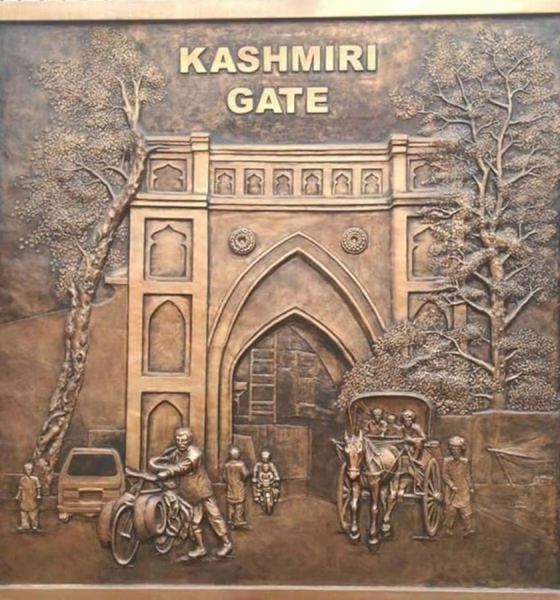
Lohari Gate—also known as Lahori Gate—is believed to be one of the oldest entrances to the Walled City of Lahore. Some historians trace its name to the earliest quarters of the city, said to have been repopulated around this gate when Malik Ayaz rebuilt Lahore during the reign of Mahmud of Ghazni. Thus, it takes its name from the city of Lahore. Others suggest the name derives from the trade of lohars (ironsmiths), practiced in the area.
The Lohari Gate and the bazaar behind it form the oldest arterial route of the Walled City, laid out during the time of Emperor Akbar. Lohari Gate also holds great historical significance as the final resting place of Qutbuddin Aibak, the first Muslim ruler of the Indian subcontinent, lies just outside its walls. Caravans arriving from Multan would traditionally enter the city through this gate, which once stood near a brick fort known as Kacha Kot, considered by many to be the first fortified settlement of Lahore, also attributed to Malik Ayaz.
The Lohari Gate is among the few city gates that the British cared to reconstruct. In fact, it os the only Gate that retained its original form.
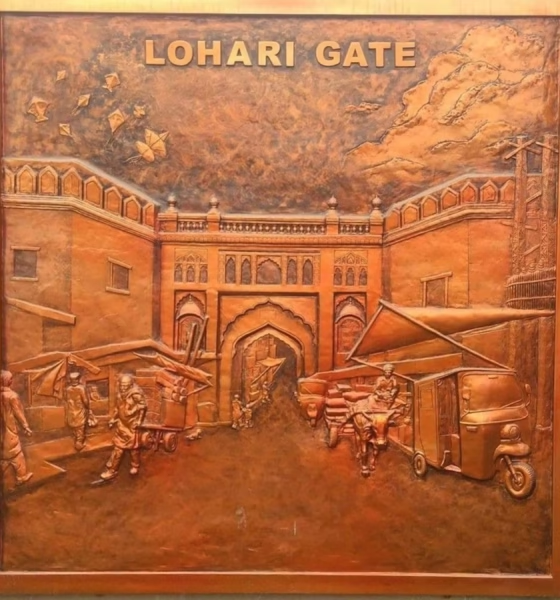
The name Masti is a distortion of Masjidi, which referred to the mosque of Mariam Makani, mother of the third Mughal Emperor, Akbar. The mosque was located in the immediate vicinity of the gate. However, some historians assert that the gate was named after Masti Baloch, who was appointed a guard.
The entrance to the Masti Gate is just behind the Lahore Fort and is also known as the Gate of Merriment.
This area is now dominated by wholesale shoe vendors selling both traditional and Western-style footwear. Further down the street stands one of the city’s oldest mosques—the Masjid of Mariam Zamani Begum—named after Emperor Jahangir’s mother. Masti Gate is one of the twelve historic gates of Lahore and remains a prominent landmark of the old city. The renovated remains of this gate can still be seen today.
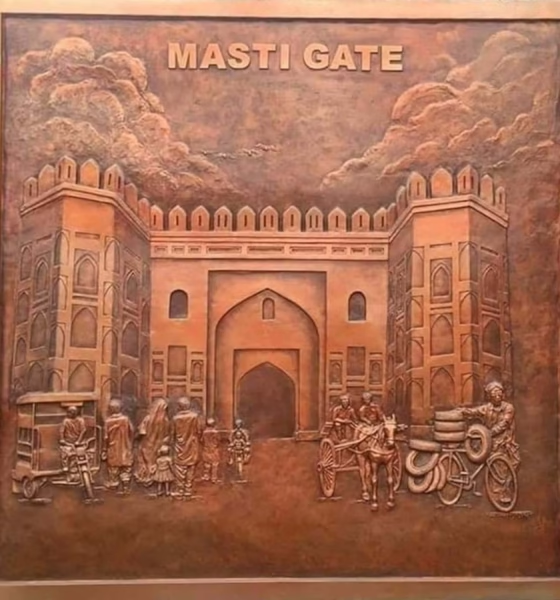
Mochi is believed to be a distortion of Moti. According to local tradition, the gate was named after Moti Ram, a guard who manned the gate faithfully during Akbar’s reign. The Mochi Gate also leads to the shoemakers’ market, the Mochi Bazaar, which perhaps explains the shift from the word Moti to Mochi.
The Mochi Gate is located in the extreme southeast of the Walled City and lies between Shah Alam and Akbari Gates.
Though the original gate was demolished during the colonial era, the area remains well known for its dry fruit markets, fireworks vendors, and, in earlier times, for kite shops.
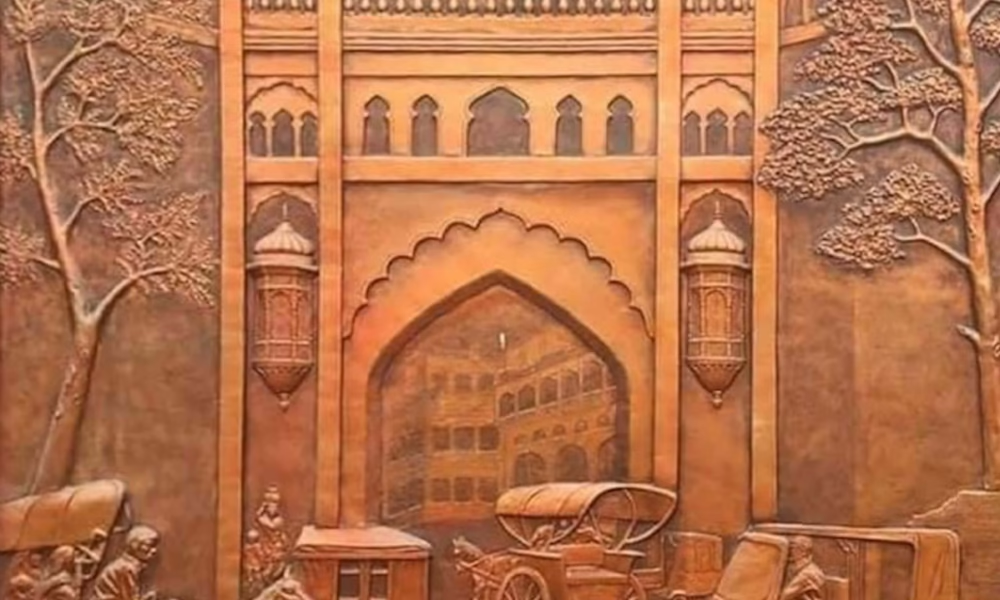
Historically, Lahore is known to have twelve gates, while the thirteenth, Mori Gate, was actually a small outlet situated between Lohari Gate and Bhati Gate.
Mori Gate was not originally a gate at all. It began as a small outlet—a mori or hole—the purpose of which was to dispose of waste, garbage, and other unwanted materials from within Lahore. Over time, this minor opening in the wall was enlarged into a proper gateway, though it retained its less-than-savoury name. True to its origin, Mori Gate is the smallest of all the gates of the Walled City.
Although Mori Gate was never officially recognized as one of the main gates, the residents of Lahore came to regard it as the thirteenth gate.
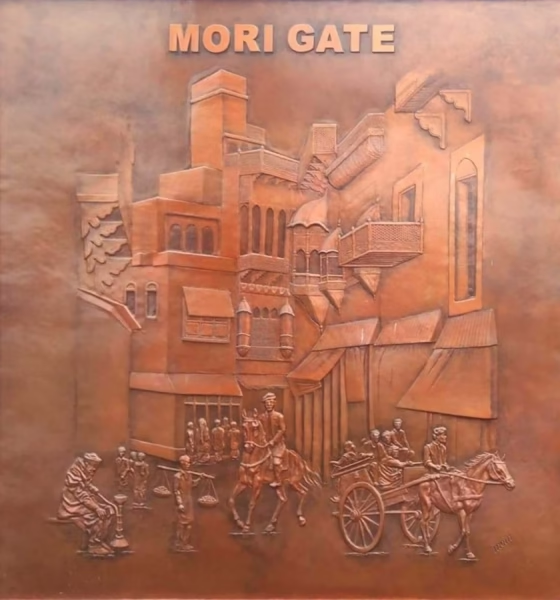
Of all the city gates built by Emperor Akbar, only Roshnai Darwaza—the Gate of Light—still retains its original structure. Probably the only gate that still radiates the splendour of its Mughal past, Roshnai Gate is located between the Shahi Qila (Lahore Fort) and the Badshahi Mosque. In the evenings, the gate was lit up, giving it the name Roshnai or light.
The Roshnai Gate served as the main entrance from the Lahore Fort to the city, especially for the nobility, and also provided access to the riverfront. Its significant height and width reflect its historic use by imperial processions and elephant caravans.
Aurangzeb Alamgir later incorporated the gate into the Abdar Khana—a square he built in 1673 as the forecourt of the Badshahi Mosque. During the Sikh era, Maharaja Ranjit Singh transformed the surrounding area into a formal garden to celebrate the capture of the Koh-i-Noor diamond from Shah Shujah of Afghanistan, and named it Hazuri Bagh. In the centre of the garden stands the Hazuri Bagh Baradari in marble.
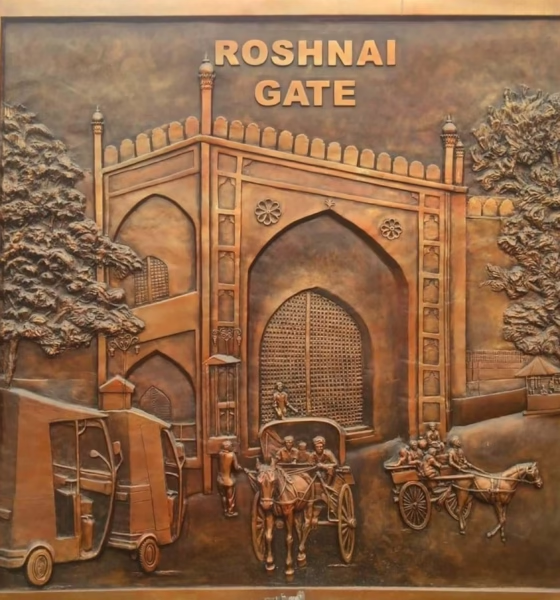
The Shah Alami Gate is named after Mohammad Moazzam Shah Alam Bahadur Shah, the son and successor of Emperor Aurangzeb.
Originally known as the Bherwala Gate, it was tragically burnt down during the partition riots of 1947, and today, only its name survives.
Despite the destruction of the gate itself, the area remains one of the busiest and most vibrant parts of the old city. The adjoining Shah Alam Market – commonly referred to as Shahalmi by locals – is a major commercial hub of Lahore. Even today, the bazaars and streets here are jam-packed throughout the day. It is particularly known for wholesale trading, making it one of the largest financial marketplaces in the city.
From jewellery to garments, crockery to groceries, ceramic wares to iron goods, wedding supplies to office accessories, and even electronics, virtually everything is available here. When Lahoris need to buy in bulk, this is where they come.
Though the physical structure of Shah-Alami Gate no longer exists, and its site can still be traced along the edge of Shah Alam Market.
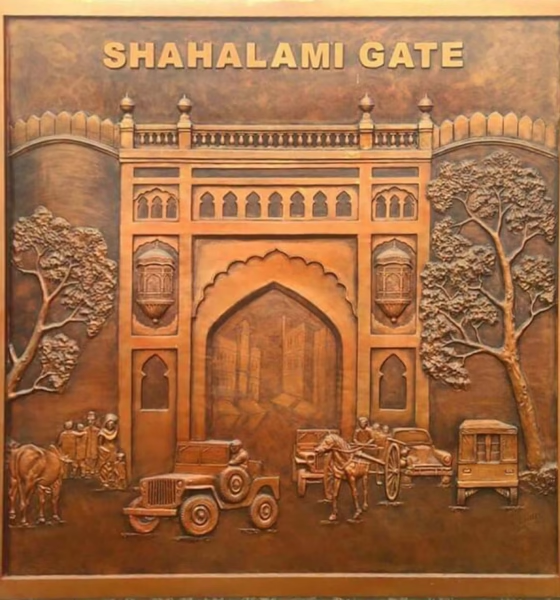
The Sheranwala Gate (Gate of Lions), previously known as the Khizri Gate, is one of the historic entrances to the Walled City of Lahore, located in Punjab, Pakistan. It was originally named after Hazrat Khwaja Khizr Elias, the revered patron saint of running waters and streams—often associated with the mythical discovery of the water of immortality. In earlier times, the River Ravi flowed close to the city’s northern boundary, and this gate was one of four that opened towards the riverfront. A ferry operated nearby, linking the city with areas across the river.
Over time, the name of the gate shifted from Khizri to Sheranwala due to an interesting episode in Sikh-era Lahore. When Maharaja Ranjit Singh came to power, he placed two caged lions near the gate, symbolizing strength and serving as a form of symbolic guardianship over the city. From then on, the public began referring to it as the Gate of Lions.
Even today, the neighborhood around the gate reflects the authentic rhythm of old Lahori life. Bustling with activity, it captures the charm of a time when water transport and spiritual associations shaped the urban landscape.
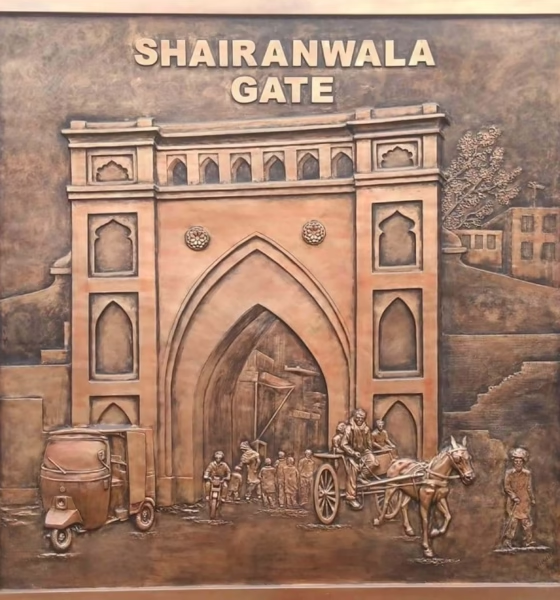
Taxali Gate once served as the sole access point through the western length of Lahore’s Walled City. It stood near the only major east-west artery within the old city, connecting Taxali Gate to Delhi Gate—a route that survives to this day even though the original Akbari-period gate itself was lost during early British rule.
The royal mint or Taxal was located near this gate, lending it its name. Today, this area is renowned for its appetising range of food. The bazaar is also the place to go to for musical instruments that are made and sold here. Pani Wala Talab (an important site of the times) and Gurdwara Lal Khooh (a sacred place of worship for the Sikhs) are also located here.
Although the gate no longer exists, the area retains its historical name and continues to bustle with life. One of the most renowned markets here is the Sheikupurian Bazaar, famous particularly for its shoe trade. The neighbourhood is also a haven for food lovers—especially those drawn to the legendary Siri Paye served by Fazal Din, affectionately known as Phajjay kay paaye. Sweets from Taj Mahal Halwai and Shahbudin Halwai add further flavour to the area’s culinary charm.
Taxali Gate was not always famous for its brothel houses or the dancing girls. It was once the nucleus of literature, art, music, and many noble and prominent personalities lived there.
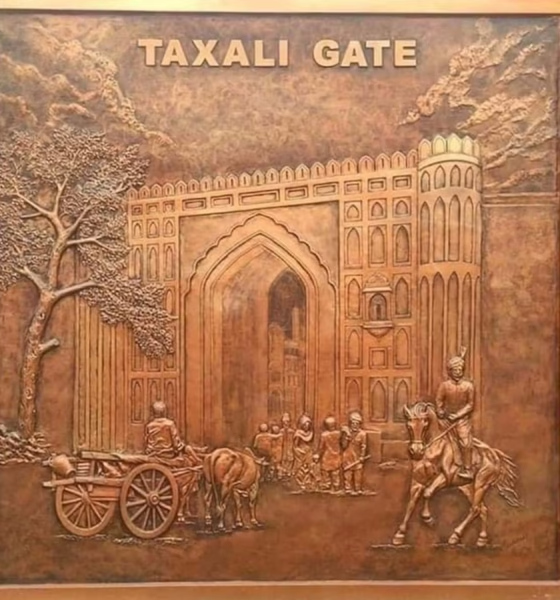
The Yakki Gate was originally known as Zakki Gate, after the martyr-saint who, according to tradition, died while gallantly defending his city against Mughal invaders. As legend has it, Pir Zaki was beheaded in front of the gate, but his headless body continued to fight before collapsing nearby. To honour his bravery, two shrines were built by his followers—one at the spot where his head fell and the other where his body lay. Both are revered by the faithful to this day.
Over time, the name Zaki gradually distorted into Yakki, which is how the gate is now remembered. Though the gate no longer exists, its historical location can still be traced through a careful exploration of the old city.
